Referred to as the ultimate design of American origin, the first “6th Gen Stealth Bomber”, let’s Discover the Best of the Stealth Titan B-21 Raider. It is a next-generation strategic bomber designed for the United States Air Force (USAF). Characterized by its advanced stealth capabilities, the B-21 is intended to penetrate highly defended airspace and deliver conventional or nuclear weapons with precision. Developed by Northrop Grumman in Palmdale, California, the B-21 Raider is designed to replace the ageing fleet of B-1B Lancer, B-2 Spirit, and Boeing B-52 Stratofortress by 2040.

This stealth intercontinental strategic bomber is under development for the USAF. The bomber features a sleek, low-observable design that minimizes its radar signature, making it exceptionally difficult for adversaries to detect and track. Its design emphasizes low observability, incorporating advanced radar-absorbent materials and shaping techniques to minimize its radar cross-section and infrared signature. This stealth technology enables the B-21 to evade enemy detection systems, providing a significant advantage in modern warfare scenarios.
The United States Air Force initiated planning for the B-21 in 2011 and subsequently awarded the primary development contract in 2015. On November 10, 2023, the B-21 conducted its inaugural flight, marking a significant milestone in its development. Anticipated to be operational by 2027, the B-21 Raider offers extensive range capabilities, facilitating missions over extended distances without reliance on aerial refuelling. Moreover, its adaptable payload capacity allows for the transportation of diverse munitions, encompassing conventional and nuclear bombs, alongside next-generation standoff weapons.
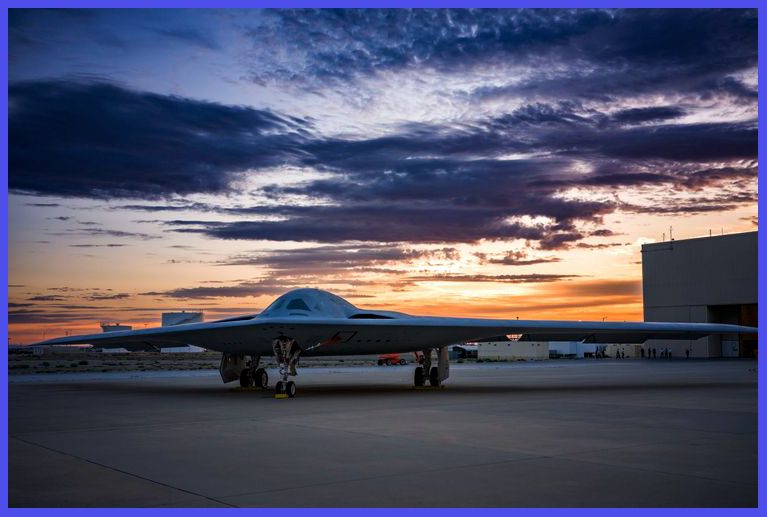
Furthermore, the B-21 incorporates advanced avionics and communication systems aimed at bolstering situational awareness and supporting network-centric warfare operations. Its modular design permits future upgrades and adjustments to address evolving threats, guaranteeing its longevity and operational efficacy. Nonetheless, numerous details regarding the B-21 program are designated as highly classified, including speed, enabling systems, size, necessary stealth characteristics, structure, engine specifications, projected armaments, and onboard sensor configurations, all of which are currently undisclosed.
The B-21 Raider represents a crucial component of the USAF’s strategic deterrence and power projection capabilities, ensuring America’s ability to confront emerging threats and safeguard its national security interests well into the 21st century.

Development of the Northrop Grumman B-21 Raider
The development of the Northrop Grumman B-21 Raider commenced in the early 21st century as a part of the United States Air Force’s Long Range Strike-Bomber (LRS-B) program initiated in 2011, followed by a request for proposal to develop an LRS-B aircraft in July 2014. The program’s objective was to create a next-generation strategic bomber to replace ageing aircraft such as the B-1B Lancer and B-2 Spirit.
Northrop Grumman secured the contract for the development of the B-21 Raider in 2015 following a competitive bidding process. According to a Government Accountability Office (GAO) report, cost emerged as the decisive factor in selecting Northrop Grumman over the Boeing-Lockheed Martin team.
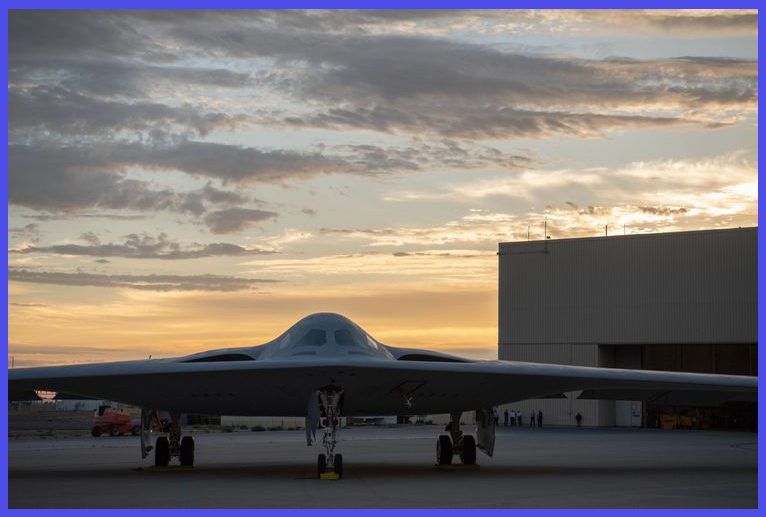
During the 2016 Air Warfare Symposium, Air Force officials revealed that the LRS-B would be officially designated as the “B-21” to signify its status as the first bomber of the 21st century. Subsequently, in September 2016, Air Force officials declared that the B-21 would be christened “Raider” in tribute to the Doolittle Raiders. Retired Lt. Col. Richard E. Cole, the last surviving member of the Doolittle Raiders at the time, attended the naming ceremony held at the Air Force Association conference.
The management and acquisition of the B-21 program are being supervised by the Air Force Rapid Capabilities Office, deviating from the conventional military procurement process. This decision stems from the extensive historical background associated with the development of the B-21 and its predecessor, the B-2, during the 1970s. Both projects experienced numerous challenges and fluctuations throughout their inception and progression. Nevertheless, the B-21 program is still obligated to adhere to the Nunn–McCurdy reporting requirements imposed by Congress. The development procedures have been veiled in secrecy due to the classified nature of the bomber’s capabilities and technologies.
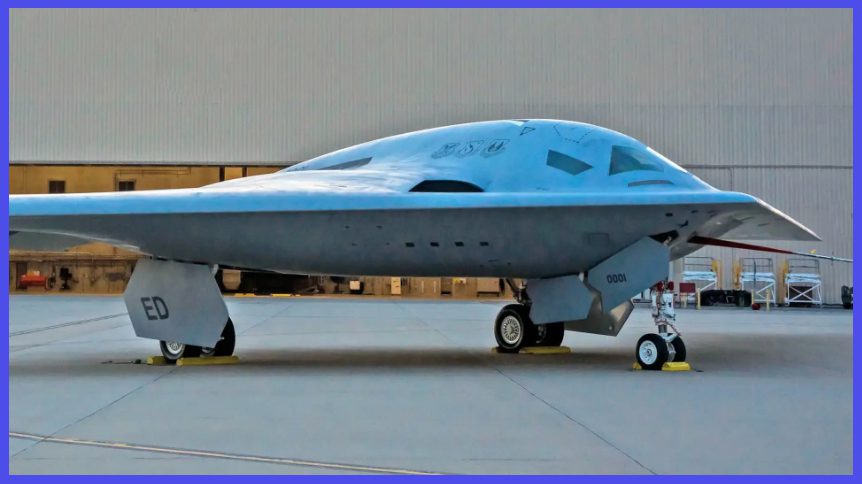
In 2016, former Secretary of the Air Force Deborah Lee James described the B-21 as a “fifth-generation global precision attack platform” equipped with networked sensor-shoot capability. However, it is widely acknowledged that the B-21 Raider is engineered to integrate advanced stealth technology, enabling it to infiltrate heavily defended airspace with minimal detection. Additionally, the aircraft’s design prioritizes extensive range capabilities, enabling it to execute missions deep within the enemy territory without the requirement for aerial refuelling. Northrop Grumman has characterized the B-21 as “the world’s first sixth-generation aircraft.”

During the development process, Northrop Grumman has collaborated closely with the United States Air Force to ensure that the B-21 Raider fulfils its requirements for forthcoming strategic missions. According to a 2015 media report, the Air Force expressed its desire for the bomber to serve as an intelligence collection platform, battle manager, and interceptor aircraft. Despite encountering several technical challenges and experiencing delays common to intricate aerospace endeavours, the program has maintained steady progress.
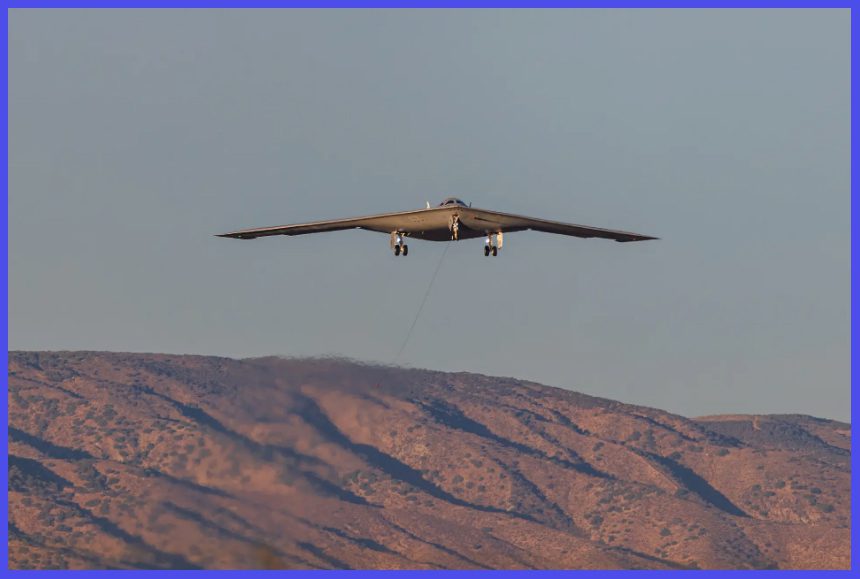
As of the most recent updates, the B-21 Raider is projected to commence its service in the mid-2027s, with production scheduled at Northrop Grumman’s facilities. In 2016, the USAF unveiled seven tier-one suppliers for the program, comprising industry partners such as Pratt & Whitney, BAE Systems, Spirit AeroSystems, Collins Aerospace, GKN Aerospace, Janicki Industries, and Go Beyond. The development of the aircraft signifies a notable progression in the United States’ capacity to uphold air superiority and exert global influence for the foreseeable future.

The Design of the Northrop Grumman B-21 Raider
The design of the Northrop Grumman B-21 Raider is meticulously crafted to fulfil the United States Air Force’s (USAF) requirements for a next-generation stealth bomber capable of penetrating advanced enemy air defences and conducting a range of strategic missions. While specific details are classified, certain features of its design have been revealed or inferred based on available information and assumptions. The critical design review for the program was finalized in December 2018.
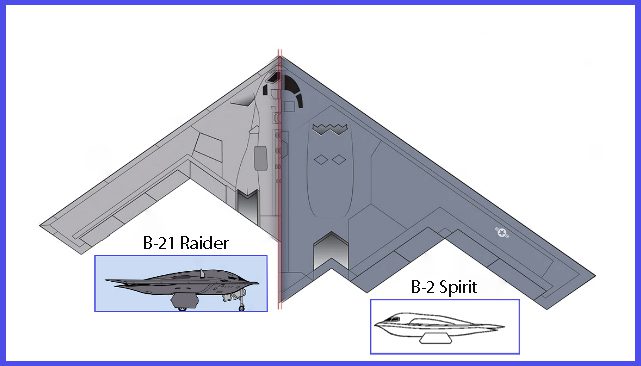
- Stealthy Profile: The design of the B-21 Raider prioritizes stealth characteristics, aiming to minimize its radar cross-section and infrared signature. This involves a combination of smooth, blended surfaces, radar-absorbent materials, and super-advanced coatings to reduce its detectability by enemy radar systems.
- Flying Wing Configuration: Similar to its predecessor, the B-2 Spirit, the B-21 Raider adopts a flying wing configuration, lacking distinct fuselage and tail structures. It features distinctive flush and blended inlets and a two-wheel main landing gear design, making it a smaller and lighter aircraft than the B-2. This design choice enhances its stealth capabilities by reducing radar reflections from traditional protruding surfaces.
- Long-Range Capability: The B-21 Raider is designed to possess a substantial unrefueled range, allowing it to execute missions deep within the enemy territory without dependence on aerial refuelling. This capability is achieved through efficient aerodynamics for internal fuel storage and advanced engines. In 2016, Chris Bogdan, the F-35 program manager, mentioned that the B-21’s engines would bear similarities to the F-35’s Pratt & Whitney F135 engine, potentially reducing its cost. However, there is a possibility of switching to other platforms, such as engines from General Electric or Rolls Royce, in the future.
- Adaptive Avionics: The B-21 Raider is outfitted with cutting-edge avionics and sensor systems, allowing it to navigate precisely and function efficiently in diverse environments. These systems are expected to encompass advanced radar, electronic warfare suites, and communication systems, which enhance situational awareness and contribute to mission success. Additionally, the aircraft will be equipped with Link-16 for battlefield communications and a high-frequency satellite link.
- Modular Payload Bay: The B-21 Raider is equipped with a modular internal weapons bay, enabling it to carry a diverse array of munitions, including precision-guided bombs and potentially future standoff weapons, along with AMRAAM for interception roles. Kathy Warden, CEO of Northrop, stated that the B-21 features a modular, open systems architecture designed for easy upgrades and the potential export of components to foreign buyers. She highlighted the B-21’s advanced internal operations compared to the B-2, emphasizing its smaller size and longer range for improved performance.

The inaugural test flight of the B-21 occurred on 10 November 2023 at the Air Force’s Plant 42 in Palmdale, California. Subsequently, on 17 January 2024, the B-21 embarked on its second publicly acknowledged test flight from Edwards AFB. Following these milestones, on 23 January 2024, the USAF awarded a low-rate initial production (LRIP) contract. In essence, the B-21 Raider epitomizes a seamless integration of cutting-edge technology and innovative design principles, meticulously crafted to address the evolving challenges of modern warfare while upholding the strategic capabilities of the USAF.

The Intended Use of the B-21 Raider in the Fleet
The B-21 is projected to replace the U.S. Air Force’s ageing fleet of strategic bombers, including 45 B-1 bombers from the 1980s and 20 B-2 bombers from the 1990s, by the year 2040. Additionally, there is a possibility that the B-21 will eventually supplant the B-52, which has been in service since the 1950s and is expected to continue operating for many more decades. As part of its modernization efforts, the USAF intends to replace its bomber fleet and a significant portion of its nuclear delivery weapons, including intercontinental ballistic missiles (ICBMs). With a particular emphasis on Indo-Pacific operations, the Air Force views the B-21 as a pivotal platform in potential engagements with China.

Estimated Specifications of the B-21 Raider, as of Feb. 2024
- Crew: 2 ( pilot and mission commander )
- Length: 54 ft (16 m)
- Wingspan: 132 ft (40 m)
- Empty weight: 31,751 kg (70,000 lb)
- Max takeoff weight: 81,647 kg (180,000 lb)
- Powerplant: 2 × Pratt & Whitney PW9000 non-afterburning turbofans, 27,000 lbf (120 kN) thrust each
- Maximum speed: Mach 0.8+
- Service ceiling: 50,000 ft ( 15,240 m )
- Armament: The B-21 Raider is designed to feature two internal bays with a capacity of 20,000 lb (9,100 kg) for weapon loads. It will have the capability to carry an extensive array of weapons, including AMRAAM, JDAM, B61 Nuclear Bomb, Joint Standoff Weapon (JSOW), Joint Air-to-Surface Standoff Missile (JASSM), and GBU-57 Massive Ordnance Penetrator. This diverse range of armaments ensures the B-21’s versatility and effectiveness in various mission scenarios.

In summary, the Northrop Grumman B-21 Raider epitomizes the progress made in aerospace technology and the continuous drive for innovation in military aviation. Its streamlined, stealthy design and impressive capabilities make the B-21 Raider an essential asset for the United States Air Force, ensuring air superiority and global power projection.
Designed to penetrate the most sophisticated enemy defences while delivering precision strikes with a diverse range of munitions, the B-21 Raider embodies the pinnacle of strategic bomber technology. Its long-range capability, advanced avionics, and modular payload bay underscore its versatility and effectiveness in a rapidly evolving threat landscape. The program’s rapid development is specifically aimed at countering Chinese influence in the Indo-Pacific region because the CCP’s illegal dominance across the region has drastically destabilized Asia. This dominance needs to be permanently stopped.
As the B-21 Raider prepares to enter service, it heralds a new era in strategic deterrence and power projection, ensuring that the United States remains at the forefront of military aviation for generations to come. With its blend of stealth, range, and adaptability, the B-21 Raider symbolizes the unwavering commitment to protecting national security interests and defending freedom in an uncertain world.
Important Announcement for Our Valued Readers!
After an article is published, it is possible that updates or changes may have occurred beyond the time of publication. Therefore, it is important to be aware that certain information in the article might be outdated. To ensure the most accurate analysis, it is highly recommended to verify the content with the latest sources available.
However, we are dedicated to delivering outstanding articles on military products and global updates. Maintaining quality and smooth operation requires resources. Your support sustains our efforts in providing insightful content. By purchasing high-quality products through our affiliated links, you help us keep our platform alive and acquire top-notch items. Your unwavering support is invaluable and inspires us to strive further.
We welcome your suggestions and requests for more information, as we value feedback from our readers. If there’s specific defence material or equipment not covered on our site, please share your request in the comments. We’ll strive to research and provide the required information. We sincerely thank you for your unwavering interest in our website, and we eagerly anticipate hearing from you! Enjoy your reading experience!

2 thoughts on “Discover the Best of the Stealth Titan B-21 Raider”